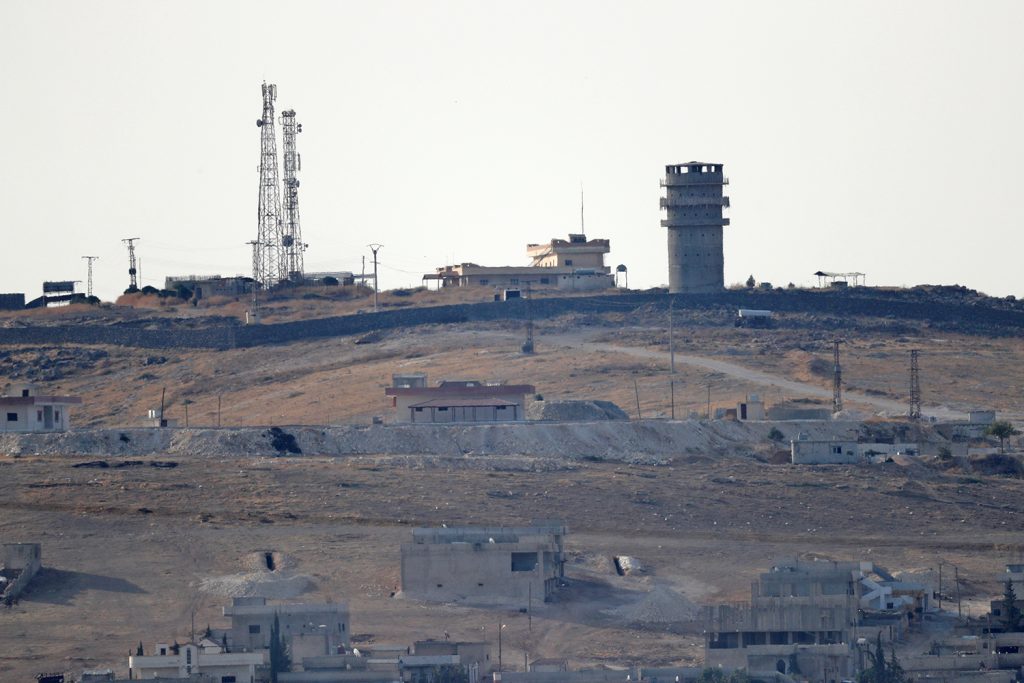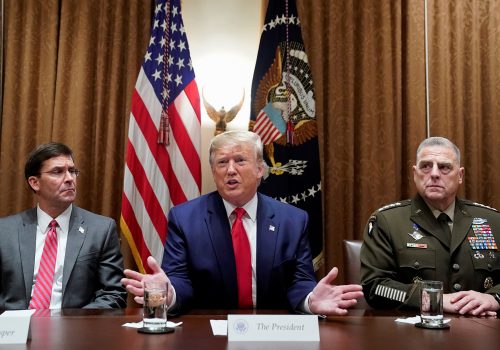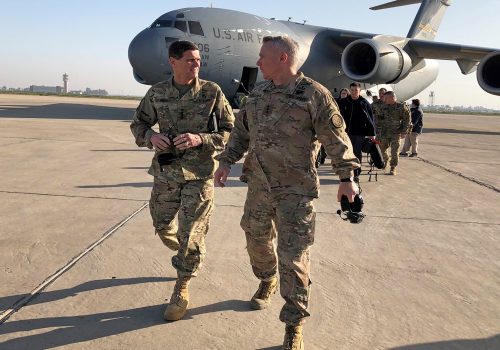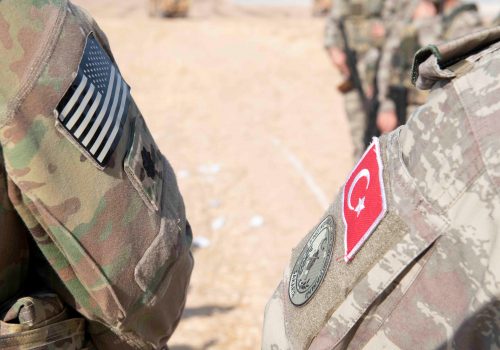US President Donald J. Trump’s decision to withdraw US forces from northern Syria set off a firestorm of bipartisan protests over myriad concerns including resurgence of the Islamic State of Iraq and al-Sham (ISIS), the betrayal of a dependable partner, and the empowerment of adversaries such as Russia and Iran, who could take advantage of the resulting vacuum.
These concerns are legitimate; however, it is important not to overstate them. It is true that ISIS stands to benefit from the move. It will give them an opportunity to free some captive fighters at Syrian Democratic Forces (SDF)-run prisons as well as family members detained at the sprawling al Hof camp. Perhaps more importantly, any ensuing chaos could allow them to again present themselves to the Arab population as the better alternative. This now, however, is a problem for the Turkish army as well as the Syrian army that is reportedly deploying to the border in support of the SDF. So while the United States has lost much of its ability to confront ISIS in Syria, it would be a stretch to say that they will re-establish the caliphate as a result.
Characterizing the move as a “betrayal” is also an overstatement. The Syrian Kurdish People’s Protection Forces (YPG), which is embedded within the SDF and with whom the United States has partnered, belong to the Democratic Union Party (PYD). The PYD has ties to the Kurdistan Worker’s Party (PKK), a terrorist group that conducted a terrorist attack in Turkey as recently as last month, which killed seven. Whatever may be true regarding current PYD support for many PKK terrorist operations, Turkey justifiably believes that people living in PYD controlled areas will be sympathetic to PKK fighters who might seek safe-haven there, regardless of what their leadership’s policies actually are. As long as that dynamic holds, there never should have been an expectation by any side that a relationship with a group connected to terrorist attacks against a NATO ally, albeit it an increasingly estranged one, is stable.
Having said that, the United States is still failing in its obligations to the SDF. In this case, it is not the why the United States withdrew, but the how. Though small in number, the departure of US forces gave Turkey the green light for an operation that will result in death and displacement of people who fought on our behalf. While their support in the fight against ISIS does not give the SDF a blank check for US support, it does require the United States to take their interests into account and give them time and support to find a political solution with the Turks or take steps to get civilians away from the fighting.
Failing to pay attention to such obligations will make crafting future partnerships more difficult. This point does not mean that state and non-state actors will not want to partner with the United States in the future. But it does mean that they will be less willing to accept risk and more willing to accept alternatives to the United States, like Russia or China, as partners.
While the concerns discussed above can be managed, they do represent real costs. The question is, was it worth it? The US president’s rationale for the withdrawal was that it was a step toward ending the United States’ involvement in “endless wars.” The difficulty with this logic is that it makes little sense to stop one war just so that another, possibly larger one, could start. At the time of this writing, Syrian and possibly Russian forces are moving into SDF areas to fight ISIS and stop the Turkish advance, increasing chances for escalation.
Perhaps more to the point, it is a mistake to conflate military presence, even in areas where combat is taking place, with war. Often the limited involvement of advisors and support personnel enable conflict reduction, if not avoidance. That is certainly the case with US support for the YPG. With a relatively small investment, the United States was able to continue degrading ISIS forces while ensuring that US interests were represented in post-ISIS Syria. That small military presence gave the United States a vote, one that it has now apparently lost.
That point brings us to the last concern. The loss of that vote entails a loss of US leadership. It will not take long before Iran and Russia step in to fill any vacuum left by the United States and its SDF partners. The removal of US presence gives Iran greater access to Syrian oil fields as well as a larger “land bridge” to the Mediterranean than it currently enjoys. It also strengthens Russia’s hand in Syria. Without US troops there, there is little stopping the Russians from supporting Syrian forces to take back all of Syria. And while the Russians would not likely confront Turkish forces, they would be in a position to broker any settlement and exclude US interests in doing so.
Getting the United States out of “endless wars” is an admirable goal. But military forces, trust among our partners, and standing firm in the face of adversaries play critical roles in reaching that goal. Getting those functions back in balance will be necessary in moving forward.
Dr. C. Anthony Pfaff is a Nonresident Senior Fellow with the Atlantic Council’s Iraq Initiative and Research Professor for Strategy, the Military Profession and Ethic at the US Army War College. The views expressed here are those of the author and not necessarily the United States Government.
Further reading
Image: An abandoned US observation post is seen from the Turkish border town of Suruc, in Sanliurfa province, Turkey, October 14, 2019. REUTERS/Murad Sezer



